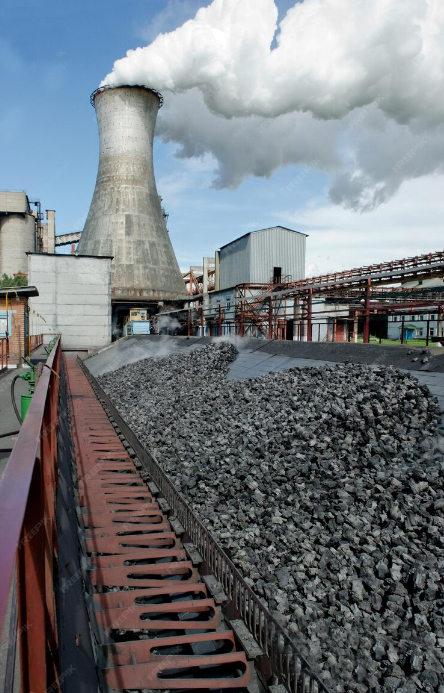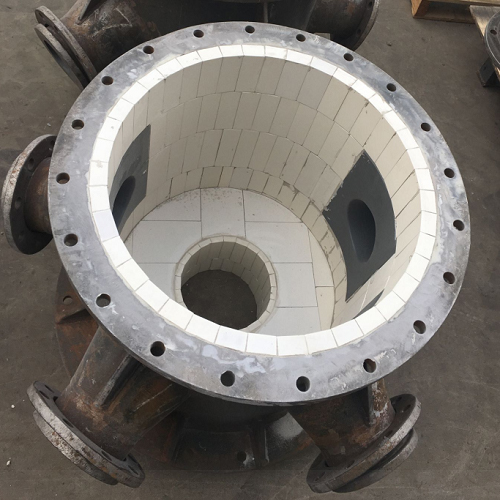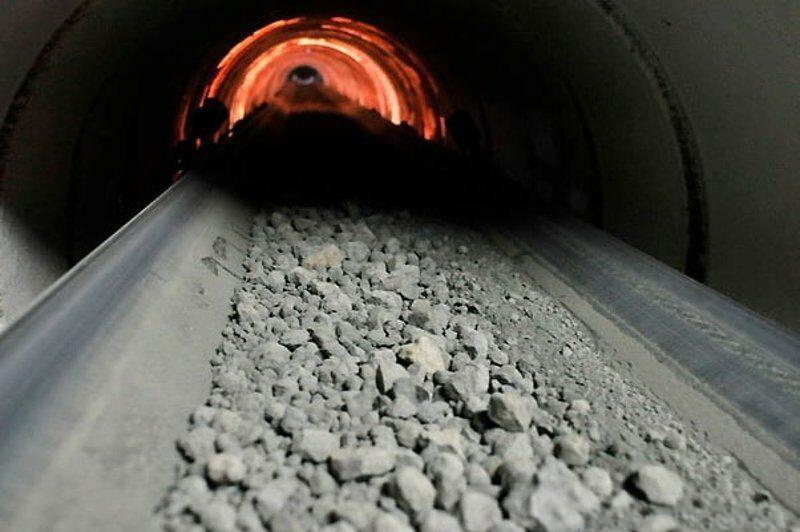Technological advance in pipe rehabilitation
Sewer renovation with AGRU pipes shaped on-site
The Reinhalteverband Donautal conservation association (RHV), represented by Linz AG Waste Water, operates a 5200 m sewage pressure line between Wilhering and Linz. Severe corrosion in the old pipe and resultant leaks have made renovation of this DN 400 pressure line necessary. The RHV opted for trenchless installation, because the line lies in the vicinity of the B129 Eferding main road and it wanted to keep traffic disruption caused by the work to a minimum. In the end, rehabilitation of the old pipe using PE pipes shaped on-site was put out to tender. The contract was awarded to RTi-Austria GmbH, a specialist in trenchless rehabilitation processes. It uses the AGRU Close-Fit liner made of PE 100-RC for the renovation. This pressure-resistant liner is designed for relining without an annular gap and can be pulled in through existing shafts or small trenches thanks to its extremely small bending radii.
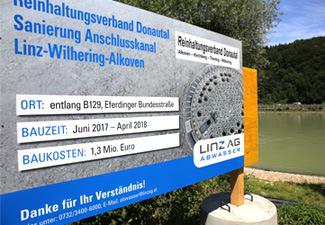
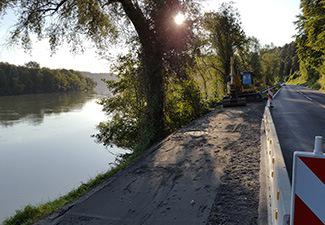
Background > trenchless
In the area concerned, just a few metres separate the B129 and the Danube, which run parallel to each other. The sewer in need of repair lies directly behind the crash barrier. Replacing the 5.2 km section using the cut-and-cover method would have reduced the width of the road and therefore would have resulted in severe disruption to traffic over an extended period. In order to hold up traffic as little as possible, the Rein-haltungsverband Donautal opted for trenchless rehabilitation of the ductile cast pipe system (GGG DN 400 mm), using the PE 100-RC Close-Fit method. The rehabilitation work started in June 2017 and is scheduled to be completed in October 2017. The renovated pipe system must be able to withstand an operating pres-sure of 3 bar thereafter.
Same quality as a new pipe after renovation
The open call for tenders stipulated shaping of the PE pipes on-site. Due to the very long lengths involved (up to 620 m), the association wanted the PE liners to be shaped on-site. The Close-Fit liners are usually folded at the factory, meaning this project placed new demands on this lining system. RTi Austria, a civil engineering company located in Altenberg bei Linz, Austria, that specialises in pipe renovation, was awarded the contract. RTi uses AGRU's Close-Fit liner for its pressure pipe renovations, which for this project is made of PE 100-RC. This material is resistant to point loads and stress fractures. The Close-Fit liner is a folded pipe that is easy to pull into an old pipe in need of repair because of its reduced cross section. The folded Close-Fit liner's memory effect enables it to reshape itself into a circular pipe after installation, using pressure and temperature. This causes the Close-Fit liner to lie tight against the old pipe and form a frictional connection with it. This method allows the greatest possible internal cross section to be retained in the old pipe and an annular gap to be avoided completely. The surface of the AGRU Close-Fit liner remains smooth throughout its service life, thereby improving the flow properties of the sewerage line. A pipeline renovated in this way has the same quality as a new pipe, with a comparable lifetime of several decades. There is no longer any chance of root intrusion, corrosion, abrasion or deposits in such a renovated pipe system.
On-site shaping
The 18 m Close-Fit liner pipe sections (OD 400 mm, SDR 26) supplied by AGRU are connected into pipe strings of between 440 m and 624 m in length at the installation site, using heated element butt welding. These correspond to the draw-in lengths stipulated in the tender. Normally, AGRU delivers Close-Fit liners to the installation site folded and wound up on reels. Due to the unusual draw-in lengths in this particular case, however, the liner's cross section has to be shaped into a U on-site. AGRU therefore equipped the site crew with an AGRU shaping unit including two caterpillar take-offs. To shape the liner, RTi first pulls the welded pipe strings through a heating section specially developed for this installation site to heat the pipe to about 80 °C. Immediately after the heating section, the pipe string is passed through the AGRU shaping unit. This deforms the O-shaped pipe into a U, reducing the cross section by 15% in the process. To ensure the de-sired U-shape is retained after the cooling process, the pipe is fixed with straps immediately upon folding.
A pig in the pipe
A further challenge at this installation site is to maintain sewerage operation. To this end, a temporary pres-sure pipeline is installed. For this, the site crew welds together PE pipes (OD 225 mm, SDR 26) supplied by AGRU to form a 1800 m PE pipeline above ground. It drains the waste water from three draw-in sections at a time during the work and is then moved on once these sections have been renovated. In the next step, the previously drained sewer sections are cleaned. To do this, a pig with attached brush rims is pressed through the pipe as a cleaning and inspection device. The second time, the pig is pushed through purely with com-pressed air in order to remove any water still in the pipe.
U returns to O
In order to pull in the U-shaped liner section, RTi uses the high flexibility of the AGRU Close-Fit liner, which permits even the smallest of bending radii. Using the pull head welded onto the pipe string, a winch pulls the individual pipe strings into the cleaned sewer sections. RTi then pressurises every pipe string with steam heated to 120°C. As a result, the folded Close-Fit liner is restored to its original circular shape. Since the outer diameter of the liner corresponds to the inner diameter of the old pipe exactly, the new pipe clings to the inner wall of the cast pipe like a second skin.
The individual pipes are then connected to each other. This is done in the shaft structures using flange con-nections. For this, the shaft structures in the area of the assembly pits are moved and also protected against uplift. The pipeline is aired and deaired via tees, whose vertical outlets are connected to vent valves.
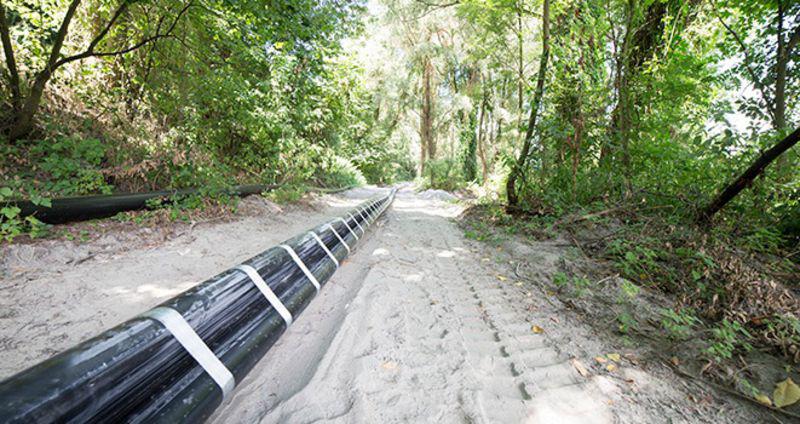
Thomas Peyrl, RTi's Regional Manager North, is supervising this remarkable installation site and said: “The technical challenge was immense. Shaping pipe strings more than 600 m long on-site was also something new for us. AGRU has supported us exceptionally well with good technical advice and its shaping unit. We have shaped the pipe strings at the construction site without any problems, are hardly affecting traffic on the road at all and are optimistic that we will be able to keep to the ambitious schedule.”
